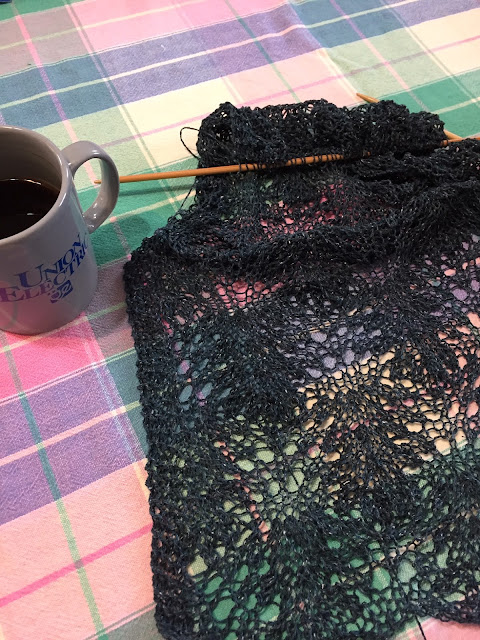What I've learned about getting good results from knit and crochet projects
All opinions my own.
Be aware that the fibers for fine hand-knitting yarns may
require special care - "real" wool will shrink and felt, acrylic will
soften and loose its finish, polyester yarn can "melt" in the dryer.
A cast-on that is not too loose and not too tight is
critical to the project and can't be fixed after the project is started (you
will have to rip out to fix). Same with the starting chain for a crochet
project.
A bound-off edge (ending edge) that is too tight or too
loose can usually be fixed by un-knitting and re-knitting the edge.
It's better to fix any mistake as soon as you see it than to
keep going and try to fix it later.
Sometimes a dropped stitch in knitting can be fixed with a
crochet hook, and the fix won't show after blocking.
When knitting, weaving in ends is better done after the
whole item is finished - and weaving in ends along the side edges creates bulk
that can interfere with seaming or edging.
When crocheting, yarn ends can usually be worked over to
conceal them in the work.
Scarves knit on the diagonal tend to have a nice appearance
even if knitted in simple garter stitch.
Beginning knitters should start with straight needles (not
circular), size 9 10 or 11, and the purl stitch, which is easier to understand
than the knit stitch because the working yarn is held to the front of the work.
Beginning knitters should also start with a smooth yarn,
even a "practice" yarn, and should make some sort of simple, square project
as a first effort.
In a lace knitting project, running a "safety
line" through the stitches on your needles every few inches is a good
idea. Making a safety line means threading a piece of scrap yarn onto a yarn
needle and threading it through the stitches on your needle. This allows you to
rip back to the safety line and put the stitches back on the needle if you make
a mistake - because it is difficult to impossible to rip back lace knitting
without a safety line, except by unknitting it stitch by stitch.



